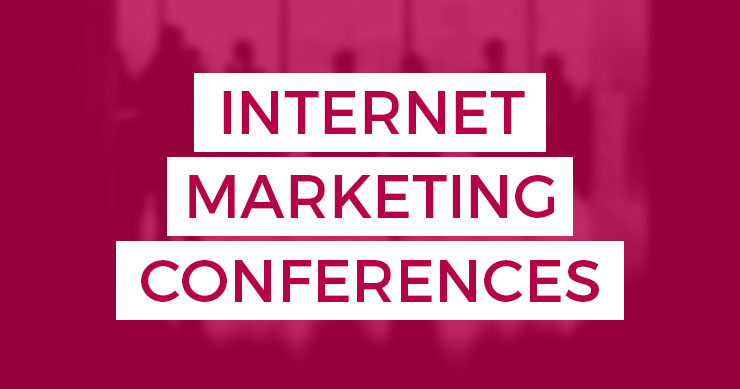
Hang in there, folks! It’s the last session of Day 2. Can you believe we’re already here? It’s time for the Super Session where all the representatives from the various search engines come to chat and debate. Or at least that’s what USED to happen. This year it’s the Google show with just one speaker. It’s okay. We heart Matt Cutts.
Most of the time.
What has Google done in the last year? If you know what we’ve done in the last year, you know what Google thinks. And if you know what Google thinks, then you can figure out where it’s going next. The best SEOs don’t react to what’s working now, they look to where Google is going in the future.
Stuff they’ve been paying attention to over the last year:
- Mobile: Nexus One and Froyo. Tethering and WiFi Hotspot. Voice input everywhere. Flash. Mobile is really growing quickly. You need to think about how it works with your site.
- Chrome: This time last year Chrome was 4.66 percent of the market, this year it’s 13.04 percent.
- Trust/Security: Serving search results from Hong Kong, Gmail HTTPS by default, SSL Search, Suspicious Activity in Gmail, Two-factor authentication (something you have and something you know, so if a hacker tries to get in and it’s not an IP address Google is used to, they’ll let you authenticate), Government Request tools. Watch out for blackhat hackers.
- Self-Driving Cars: If Instant Previews wasn’t forward-thinking enough for you (Ask.com did it yeeeears ago), Matt says, well, they also launched self-driving cars. Heh.
What has Google done for users? Speed! We’ve seen Caffeine, Real-Time Search, Google Instant, Instant Previews, Gmail Priority Inbox – they’re all about speed.
Caffeine: Continuous Updates of our index. Fifty percent fresher result. They’ll crawl a document from your Web site, they’ll instantly index it, and it can be live and served to users within seconds. That’s the essence of what Caffeine is. Tied together with that is Real-Time Search. They’re trying to get people results faster – enter Google Instant. Google saw people wasting time searching and looking at the results wondering what to click on. Google is now trying to offer you answers that you might want. If you hit “w”, you probably mean “weather”, so they’ll show that to you. Power users don’t like it because they know exactly what they want to use for. But for users that are new or that users that want to explore, it’s fantastic because you see useful things as you’re typing.
Google Instant for Webmasters
Three ways to count as impression:
- User hits search/enter or selects query from auto-complete [old way]
- User clicks on a link
- Users stops typing and results displayed for 3+ seconds
User behavior will change, but it’s not the sort of thing people need to panic over. It doesn’t change things to a huge extent. It’s relatively stable. It was tested before it launched.
What will I see in my logs?
If a user types [pub] meaning [PubCon], you’ll see [PubCon] in your referrers. You won’t see the fragment. Some people were worried about that.
Instant Previews: Lets you see a preview of the page so you can quickly decide which result to click. Ask.com did it years ago, Microsoft did too. If you click the magnify glass, it will show you a visual snippet and highlight the text that Google pulled with that keyword.
Also new: Search options shown by default. As an SEO, the [change location] is the most important. Now you can do queries as if you were in Seattle when you’re really in New York. It will also change the ads.
What has Google done for Web developers.
Making Sites Faster
- mod_pagespeed
- open-source Apache module
- can reduce page load times by 50 percent
- Asynchronous Google Analytics
- Improved accuracy -goes in the document head.
- New default tracking code
- SPDY Protocol
Crawling AJAX
#! URLs adopted by Facebook and Twitter. Googlebot gets an HTML snapshot of a page.
What have we done for webmasters?
Easier Spam Reporting [The blackhats all boo. Hee.]
- Google Web spam Report Chrome extension
- Automatically populates these fields
Are spam reports read by Google? Yes, but we may not manually review every report. Investigations prioritized based on user impact. Spam reports gets a 4x priority multiplier as if they found it themselves. The more high profile the site, the more seriously they’ll take the report.
What else have they done?
- Cross-domain rel=”canonical”
- rel=”alternate” for multi-lingual templates
- Multiple content types supported in a single sitemap file
- Updated SEO Starter Guide
- Google’s SEO Report Card
- Easy accessibility wins for YouTube; They have tools where they will automatically run auto captions.
New ways to verify ownership of a site.
- Verified owner grants access to additional users
- via Google Analytics code
Site Performance in labs – only affects less than one percent of queries. That’s less than one in a thousand sites. Don’t panic, but if you CAN speed up your site it can help your ROI and conversions.
More data and charts for queries – data for many more queries. Built-in charts.
More Notifications: Message Center notifications for suspected hacking and increase in crawl errors. Definitely enable email forwarding so you can get these messages!
Rich Snippets Improvements
What’s in store for the future?
They listen to feedback.
- ever-BETA – mostly stopped using the BETA label because people hated that everything they released was in Beta.
- Buzz Claim – Not enough outside testing. Testing both Instant and Instant Preview visibly after the backlash from Google Buzz.
Last year they had a plateau of spam. They’re devoting more resources to spam.
- goo.gl: Fast URL shortener with excellent up time
- SSL Search: Your boss won’t see your searches.
- Birthday Doodle: Remember to set your birthday in your Google Profile
Big Trend: Hacked Sites. They’re ready for spam again, especially link spam.
More help for webmasters: Engineers are also working to help webmasters affected by spam. They’re giving more and better penalty notifications. Some new messages are being sent today. There’s an improved reconsideration process.
Big Trends
- Mobile
- Local
- Social
- Variety: Real-time, Video, News
- HTML5
The Nine Tips You Must Know
- SEO: Chase users, not algorithms
- Keywords: Ask 10 taxi drivers rule [by “taxi drivers”, he means people NOT in the industry]
- Blog: Pay attention to first link [Don’t waste your first link]
- Content: Read it out loud.
- Twitter: Leave room for “RT @you”
- Video: Make one [Video is one of the most popular properties after Images]
- Conversion: Test. Repeat. Guide User.
- Anyone: Own your own domain. [If you don’t own your own domain, it may be taken away from you]
- Webmaster Tools: Turn on Email
Question & Answer
How do you think about click thru optimization on your snippets?
It can come from DMOZ (shown when they can’t crawl your site), it can come from the Meta Description field (shown if it matches the query really well) or parts of your page. They’re looking for the best matches. What you want to be looking at is, what are the common queries that people will be typing to find you? Take a look at the snippets. If you don’t think they’re helpful, then absolutely change them. You want to make them more enticing so that people click. Because then it doesn’t matter if you’re ranking third instead of first. People will click on you anyway.
Are there situations where Google is ignoring the canonical tag? If so, what are those situations?
Most of the time, they listen to it. Almost all of the time, they do. There is a computer hardware manufacturer, that took www.domain.com and rel=canonical’d to www4.domain.com — which was a 404. What happened was that they completely dropped out of Google. They were unhappy. Go figure. Google tries to make it harder for people to shoot themselves in the foot. If you send Google to a 404 or an endless loop, they’ll ignore it.
Bing says they have 1,000 ranking factors. Google says they have 200. John Mu said Google uses algorithms to figure out how many algorithms they should use.
How many ranking factors does Google have? It depends how you define it. One engineer on his team is writing one classifier that had 50 signals. And that one classifier generates one number. Is that one number or fifty signals? They’re trying not to get in a war of “ooo, we have more signals than you”! He thinks 200 is a pretty honest number. Each individual component signal can have a ton of other stuff. They use machine learning, but they also leave room for intuition and the ability to de-bug mistakes.
When it comes to Google Places, Google gets a lot of data from external data sources. How is Google trying to combat spam in that area?
There are things that Google does to try and improve Google Local spam. Local has been growing very fast so they’ve been trying to produce a lot, quickly. If you look at things like locksmiths, people have been spamming locksmiths since before there was the Internet. It’s a longstanding field. There are people working on it.
The other thing Google has done to try and improve the speed at which they correct errors is that instead of using TeleAlas data, they’re letting people correct stuff on Google Maps [Read Search Engine Land’s post about No More TeleAtlas]. It lets them make changes much faster. Work is continuing.
What criteria do you use to pull reviews onto Google Places?
He’s not sure. He’ll look into it.
Are you doing anything to combat spam in the Android market or employing any kind of customer service?
[nervous laugh from Matt]
There are certainly things going on where it’s not optimal. Every time he installs an Android app, he marks spam when he sees it. There’s an abuse team that deal with spam that isn’t Web spam. But he does see a lot of people putting in work on making the Android market better. So that’s coming. Clearly Android is a high priority for Google. Clearly you want to make the market as good as it can be. But he’d disagree with the premise that Google will never make changes to that. He thinks Google’s going to work to continually improve that.
Guy in the back of the room sells sex toys and wants to know why Instant Previews is domain-specific and not keyword-specific.
If may be it’s just not a high enough profile site. He expects over time that will increase. Right now, not every site will have a preview to start with because they just may not have seen it yet.
Is Google using other signals to find new domains? He launched a site with 0 links and it’s getting traffic and he can find it in the index. Is AdSense feeding into the system?
AdSense is not feeding into it. They don’t discover new pages because of AdSense. There are lots of ways that you can discover domain names. Links are the biggest. But there are other search engines coming out like Bing…he doesn’t want to give any hints but, links are a good way to find new domains, AdSense is not.
How does Google view the age of a site? He has a site that’s 5 years old and Google is quite kind to that one. It’s more strict on its newer sites.
After six months or so it’s not that big of a factor.
And we are Out. Of. Here! See you bright and early tomorrow for the final day of PubCon.


